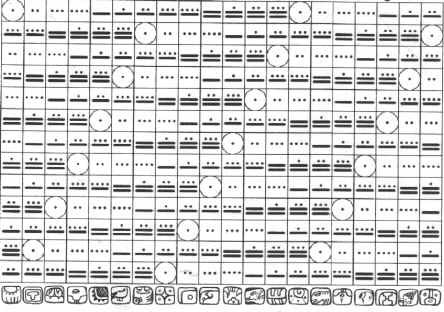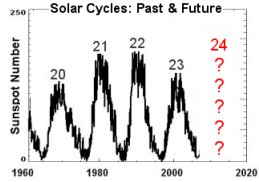
ALL ABOUT 2012
THE MAYAN CALENDAR DOES NOT END IN 2012
KEEP READING!!!
The date December 21st, 2012 A.D. (13.0.0.0.0 in the Long Count), represents an extremely close conjunction of the Winter Solstice Sun with the crossing point of the Galactic Equator (Equator of the Milky Way) and the Ecliptic (path of the Sun), what that ancient Maya recognized as the Sacred Tree. This is an event that has been coming to
resonance very slowly over thousands and thousands of years. It will come to resolution at exactly 11:11 am GMT.
The Tzolkin is a 260-day calendar based around the period of human gestation. It is composed of 20 day-signs, each of which has 13 variations, and was (and still is) used to determine character traits and time harmonics, in a similar way to Western astrology. The Maya also used a 365-day calendar called the Haab, and a Venus calendar, plus others. They measured long time periods by means of a Long Count, in which one 360-day year (a "Tun"), consists of 18 x 20-day "months" ("Uinals"). Twenty of these Tuns is a Katun; 20 Katuns is a Baktun (nearly 400 years); and 13 Baktuns adds up to a "Great Cycle" of 1,872,000 days, ( 5200 Tuns, or about 5125 years).
Mayan scholars have been attempting to correlate the Long Count with our Western Gregorian calendar, since the beginning of this century. There has been massive variation in the suggested correlations, but as early as 1905, Goodman suggested a correlation only 3 days from the most popular one today. Known as the GMT correlation, or "correlation # 584283", this was finalized in 1950, and puts the start of the Great Cycle ( day 0.0.0.0.0) on 11th August 3114 BC, and the end-date (known as 13.0.0.0.0.) as 21st December 2012.
Jose Arguelles has pointed out that the Tzolkin is a harmonic of the Great Cycle, and can be used to map history, as if it is measuring not individual gestation but species gestation, since 5 Great Cycles add to exactly 26,000 Tuns; the "Grand Year" or precession of the equinoxes - a higher harmonic of 260.
NOTE: The astronomer Philip Plait has stated very clearly that the Mayan calendar does not end in 2012 at all, that it is like the odometer on your car, as each section of the odometer reaches 9 and then clicks over to 0, the next number to it starts a new cycle, so that when all the numbers again reach 0 all the way across the odometer - the last number will change from 1 to 2 and the new cycle starts all over again.
See: Mayan Database
Sunspot Cycles; Adrian Gilbert and Maurice Cotterell, in their book the Mayan Prophecies, say that the end of the Great Cycle is the culmination of a series of long-term sunspot cycles which will flip the sun’s magnetic field, causing earthquakes and flooding on earth. Moreover, the changing magnetic field will alter the endocrine production of the pineal gland. John Major Jenkins has pointed out that the detailed graphs of the cycles do not actually show significant termination points at the end of the Great Cycle; click here for Jenkins' full unabridged review of The Mayan Prophecies.
According to John Major Jenkins, it will take 36 years to precess through the Galactic equator. The Galactic Alignment "zone" is
1998 +/- 18 years = 1980 to 2016. This is "era 2012"
[So why are we worried?]
2007 = 2012 - proof?
Generally speaking, scientifically accepted records of sunspot activity do seem to be heading for a climax in the near future.
From: http://www.diagnosis2012.co.uk/
Note: Real science is predicting the next/current sun cycle to be the worst in 50 years. The first two sunspot's of 2006 are moving in reverse direction.
August 15, 2006: On July 31st, a tiny sunspot was born. It popped up from the sun's interior, floated around a bit, and vanished again in a few hours. On the sun this sort of thing happens all the time and, ordinarily, it wouldn't be worth mentioning. But this sunspot was special: It was backward.
"We've been waiting for this," says David Hathaway, a solar physicist at the Marshall Space Flight in Huntsville, Alabama. "A backward sunspot is a sign that the next solar cycle is beginning."
Right: The tiny, backward sunspot of July 31, 2006. Credit: SOHO. [Larger image]
"Backward" means magnetically backward. Hathaway explains:
Sunspots are planet-sized magnets created by the sun's inner magnetic dynamo. Like all magnets in the Universe, sunspots have north (N) and south (S) magnetic poles. The sunspot of July 31st popped up at solar longitude 65o W, latitude 13o S. Sunspots in that area are normally oriented N-S. The newcomer, however, was S-N, opposite the norm.
This tiny spot of backwardness matters because of what it might foretell: A really big solar cycle.
Solar activity rises and falls in 11-year cycles, swinging back and forth between times of quiet and storminess. Right now the sun is quiet. "We're near the end of Solar Cycle 23, which peaked way back in 2001," explains Hathaway. The next cycle, Solar Cycle 24, should begin "any time now," returning the sun to a stormy state.
Satellite operators and NASA mission planners are bracing for this next solar cycle because it is expected to be exceptionally stormy, perhaps the stormiest in decades. Sunspots and solar flares will return in abundance, producing bright auroras on Earth and dangerous proton storms in space: full story.
But when will Solar Cycle 24 begin?

"Maybe it already did--on July 31st," says Hathaway. The first spot of a new solar cycle is always backwards. Solar physicists have long known that sunspot magnetic fields reverse polarity from cycle to cycle. N-S becomes S-N and vice versa. "The backward sunspot may be the first sunspot of Cycle 24."
It sounds exciting, but Hathaway is cautious on several fronts:
First, the sunspot lasted only three hours. Typically, sunspots last days, weeks or even months. Three hours is fleeting in the extreme. "It came and went so fast, it was not given an official sunspot number," says Hathaway. The astronomers who number sunspots didn't think it worthy!
Second, the latitude of the spot is suspicious. New-cycle sunspots almost always pop up at mid-latitudes, around 30o N or 30o S. The backward sunspot popped up at 13o S. "That's strange."
These odd-isms stop Hathaway short of declaring the onset of a new solar cycle. "But it looks promising," he says.
Even if Cycle 24 has truly begun, "don't expect any great storms right away." Solar cycles last 11 years and take time to build up to fever pitch. For a while, perhaps one or two years, Cycle 23 and Cycle 24 will actually share the sun, making it a hodgepodge of backward and forward spots. Eventually, Cycle 24 will take over completely; then the fireworks will really begin.
Meanwhile, Hathaway plans to keep an eye out for more backward sunspots.
The sky on December 21st, 2012 A.D.
showing a rare astronomical alignment -
the winter solstice sun is right in the
"dark rift" in the Milky Way.

No comments:
Post a Comment